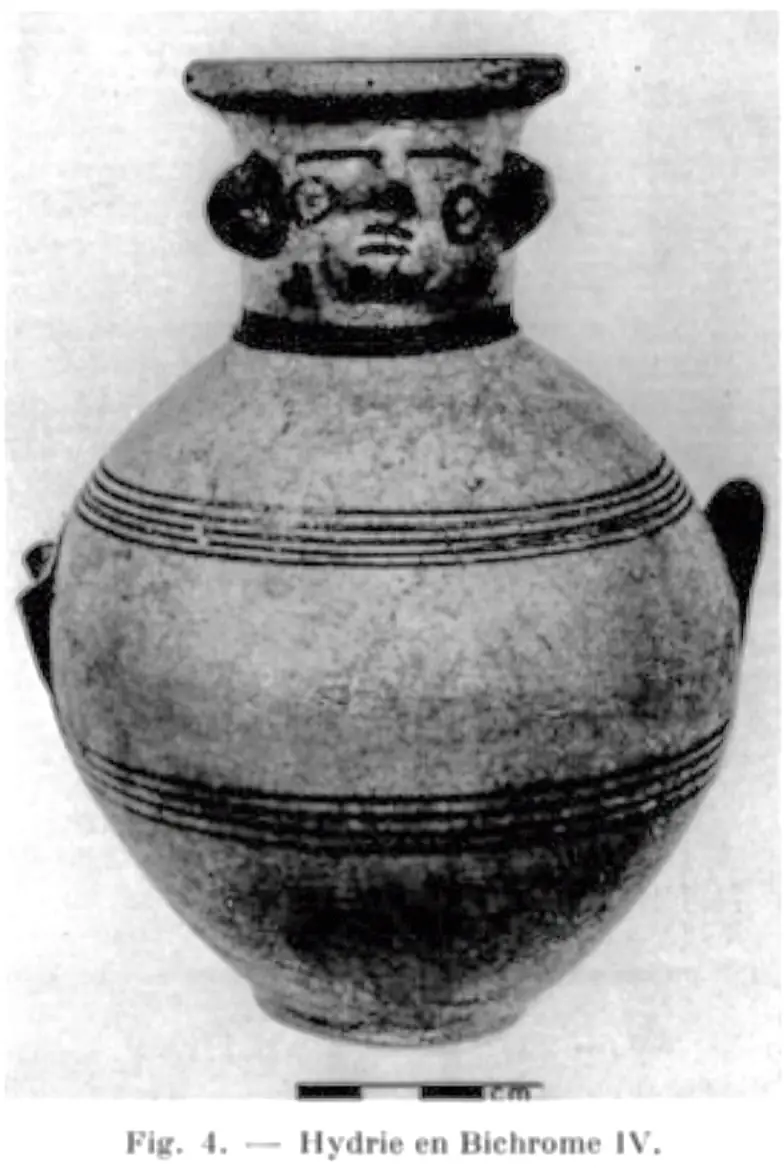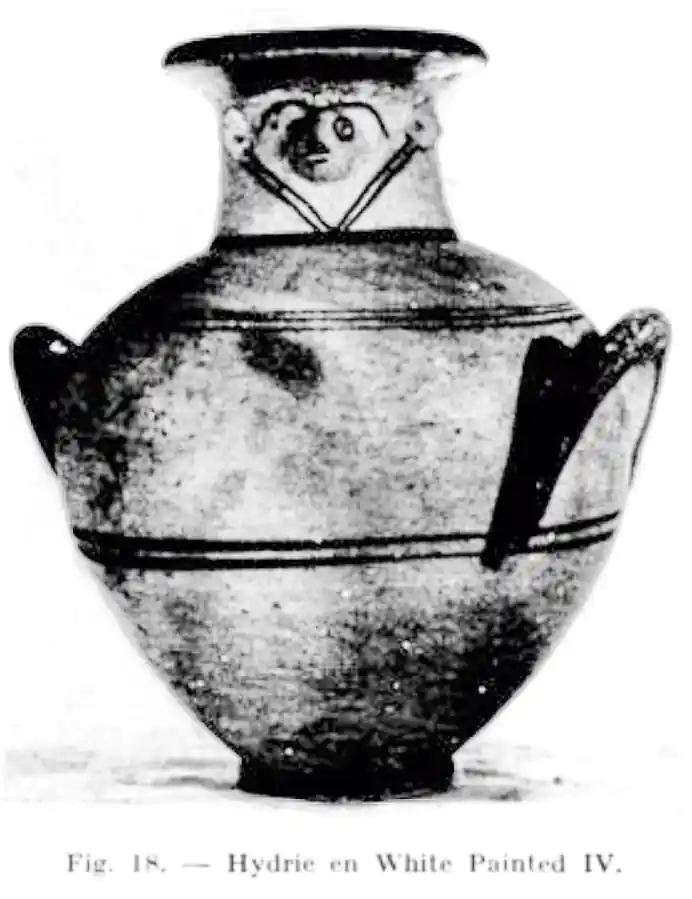
Anthropomorphic Hydria: Artifact Analysis
Alexis Drakopoulos
Alexis Drakopoulos is a Greek Cypriot Machine Learning Engineer working in Financial Crimes. He is passionate about Archeology and making it accessible to everyone. About Me.
Discover the whimsical world of Iron Age anthropomorphic vessels from ancient Cyprus. Uncover the story behind a rare and captivating hydria and explore its connection to the broader context of Cypriot pottery. Join us on a journey through time as we delve into the artistry and creativity of Cypriot potters, who continued to innovate and express themselves despite the standardization of pottery forms in the face of changing political and economic landscapes.
May 5, 2024
Artifact
Of course! Here is your article with the requested links added.
Iron Age Anthropomorphic Vessels
The Cypriot Bronze Age is celebrated for its remarkable artistic creativity and diversity, particularly in the realm of pottery. From intricate composite vessels to captivating group scenes and zoomorphic shapes adorning large bowls and jugs, the Cypriot Bronze Age represents a golden era of artistic expression. Anthropomorphic shapes were no exception, with a wide range of forms, from the iconic Plank figures and Astarte figurines to the more subtle anthropomorphic features gracing red slip pottery.
As the Iron Age dawned, significant changes occurred in the island's pottery production. The widespread adoption of the potter's wheel led and new economies and political structures resulted in a more standardized set of pottery forms, as described in our compendium. However, creativity persisted, manifesting in more nuanced ways, such as experimentation with proportions and the incorporation of geometric motifs, particularly the captivating circle motif.
While zoomorphic expression in Iron Age pottery was largely limited to subtle shapes, such as the tail motif often depicted at the base of jug necks, anthropomorphic shapes remained a rarity. Among the few known examples, the most "common" types of anthropomorphic vessels from this period are the anthropomorphic jugs, featuring either a human form attached to the neck, often grasping the spout, or an entire neck replaced by an anthropomorphic head.
These complex shapes are more frequently encountered in Bichrome Red ware jugs, though they also exist in the more prototypical Bichrome style. The scarcity of these anthropomorphic vessels could indicate that they either had little demand on the island or by its neighbors or that very few potters made them for only short periods of time.
Anthropomorphic Hydria
A rare anthropomorphic jar, often referred to as a hydria due to its similarity with the greek shape, made its way to our collection.

The Hydria is only 12cm tall, with the crudely shaped facial features utilizing prototypical geometric motifs. The eyes are represented by two concentric circles, with the eyebrows and mouth created using simple lines of black slip. The ears are perforated and fully covered in red slip. Some red coloring can be seen on the right cheek, possibly due to some mistakenly applied slip.
A detailed 3D model of the anthropomorphic hydria can be viewed here: Anthropomorphic Hydria 3D Model

The style, size and shape result in a whimsical and unique piece of ancient Cypriot art. The Hydria is of the bichrome style and, as the name implies, is built upon the basic jar shape. It is unlikely that this anthropomorphic piece is from the Cypro Geometric period, as stranger pieces usually appear during the late Archaic, but there is no comparative piece to confirm this.
Finding Comparative Pieces
No similar pieces exist in collections within our catalogue including the MET, British Museum, Ashmolean and others. Our catalogue is not comprehensive though, and so searches beyond our collection are necessary.
The 1899 catalogue of the Cyprus Museum, compiled with the help of Max Ohnefalsch-Richter, does not document a single similar piece among a list of over 5000. It is however possible that the descriptions are simply inadequate.
Every year, starting in 1958, Vassos Karageorghis wrote a yearly bulletin documenting new archeological finds across the island of Cyprus titled "Chronique des fouilles et découvertes archéologiques à Chypre", which translates to "Chronicle of excavations and archaeological discoveries in Cyprus". In the 1974 and 1975 editions, he describes three items that are of particular interest to us.
1974 & 1975 Excavations in Kourion
Excavations across the island, and especially Kourion, were particularly fruitful in the 1970s. Karageorghis describes a number of anthropomorphic hydriae found in the region. In particular he writes the following in the 1974 chronicle:
"The Kourion region had already produced a White Painted IV hydria, the neck of which was decorated with a painted human face. Two other similar hydriae were discovered this year in the same region:
17: Hydria. Inventory No. 1974/11-13/12. Height 31 cm (fig. 18). The face is partly modeled, and the facial details (eyes, eyebrows, mouth) are painted. The ears, rendered in relief, are perforated.
18: Hydria. Inventory No. 1974/IV-29/4. Height 33 cm (fig. 20). The neck of the hydria bears two eyes and large eyebrows ending in a triangle between the eyes. The shoulder area is decorated with small concentric circles."
I was not able to track down the illusive "White Painted IV hydria" mentioned by Karageorghis. In the 1975 chronicle, he writes:
"A hydria of Bichrome IV manufacture, from the region of Kourion, of a style that is represented by several other specimens from the same region. Inventory No. 1975/IX-29/3. Height 17 cm (fig. 4). The neck is shaped in the form of a human face with facial features painted or rendered in relief; 6th century BC."
The following three items helpfully come with images I have attempted to restore here:



The Hydria seen in Figure 1 is most similar to ours in form, though all have similar stylistic elements with perforated ears adorned with slip, taking the same fundamental hydria like form and having eyes created with the use of the circle motif. We can therefore also assume that our Hydria likely originates from Kourion in the late Archaic period.
We were further able to track down some of these in the Cyprus Museum in Nicosia, and the Local Kourion Museum.

Despite the standardization of pottery forms in the face of changing political and economic landscapes, potters continued to develop their own artistic expressions, in this case resulting in the whimsical and unique design of this hydria.
The comparative pieces described by Vassos Karageorghis in his 1974 and 1975 chronicles provide valuable context for understanding the origin and date of this hydria. The similarities in form, size, and decorative elements suggest that our hydria likely originates from Kourion and dates back to the 7th or 6th century BC.


